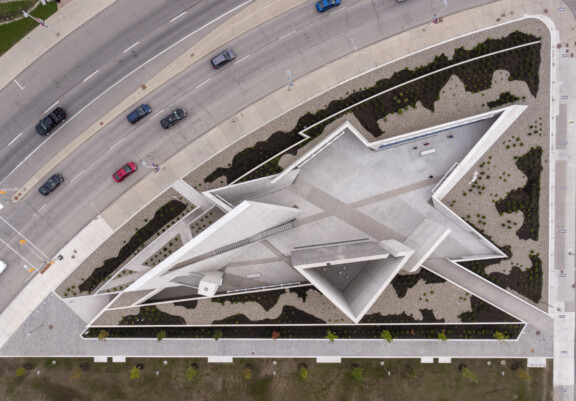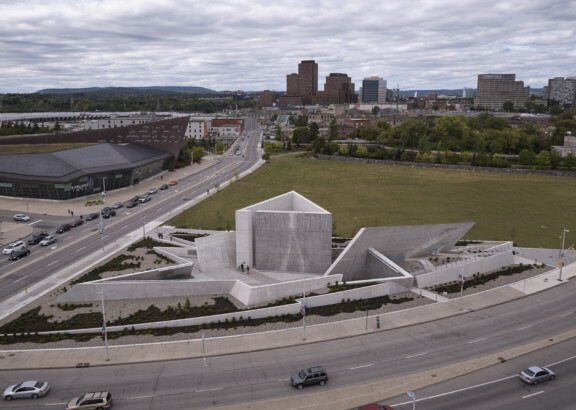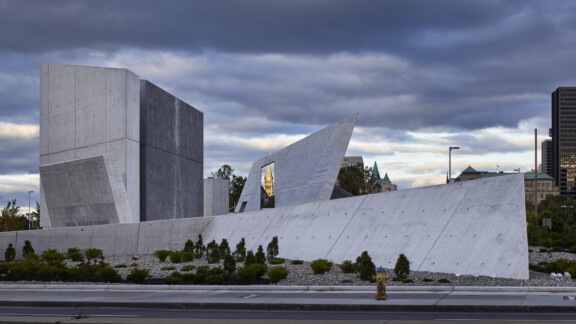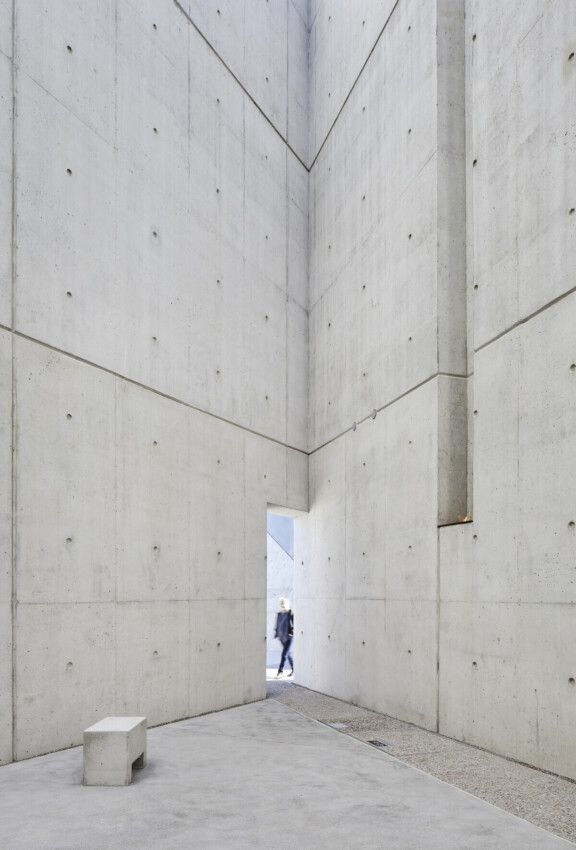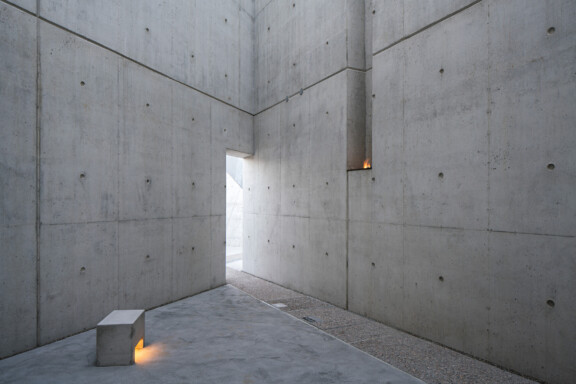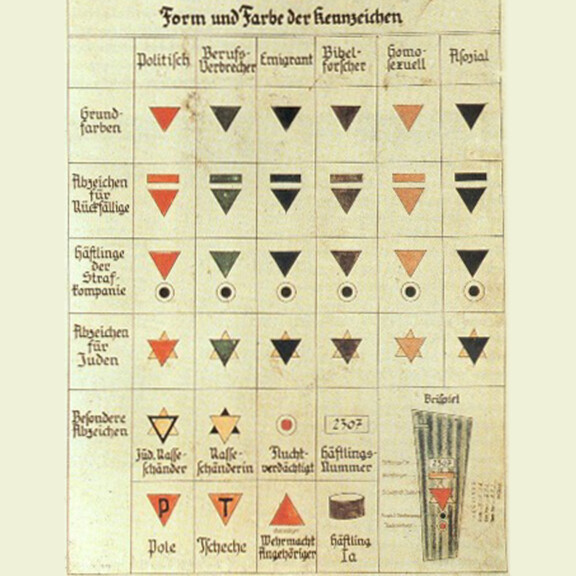Landscape of loss, memory and survival.
The National Holocaust Monument, achieving a delicate equilibrium between an austere expression and a soothing effect, has emerged from a legitimate team work. Through a fruitful exchange based on the mutual respect of each member’s skills, the team worked on a proposal that would enduringly convey the many aspects of this difficult theme.
The design emerges from the star that was used during the Holocaust as a symbol to mark Jews for extermination, among other persecuted populations such as homosexuals, Roma, Sinti, Jehovah’s Witnesses, as well as political and religious prisoners. The geometry for the monument is rooted in the star to become six triangular volumes built of concrete, producing jagged shifting planes that penetrate the sky. Organized around a central gathering space for commemorations, the six surrounding volumes carry thematic, interpretive, and contemplative moods linked to the experience of the Holocaust. The ‘journey through the star’ is organized on two levels of terrain, one that moves upwards towards the future, and the other that descends into the landscape of the monument. The `Stairs of Hope` connects these two levels of the structure terminating with dramatic views of the Parliament Buildings.
A landscape of low coniferous trees inspired by the Boreal forest, a powerful symbol of the Canadian physical landscape, surrounds the built portion of the monument to represent, on Canadian terrain, resilience in adapting to and surviving a harsh and hostile environment. Coniferous trees have effectively developed adaptive traits to survive within a difficult boreal climate that is characterized by long, very cold, dry winters and short, cool moist summers. The landscape planting is composed of a patterned gradient that transitions from density to sparseness as one moves towards the monument. Triggering a mental leap, this gesture is mirrored on the ground surface by a gradient of round granite pebbles. The design is a fully integrated concept that communicates – through architecture, landscape and art – the hardship and suffering of victims while also conveying a powerful message of hope, strength, survival and resilience.
